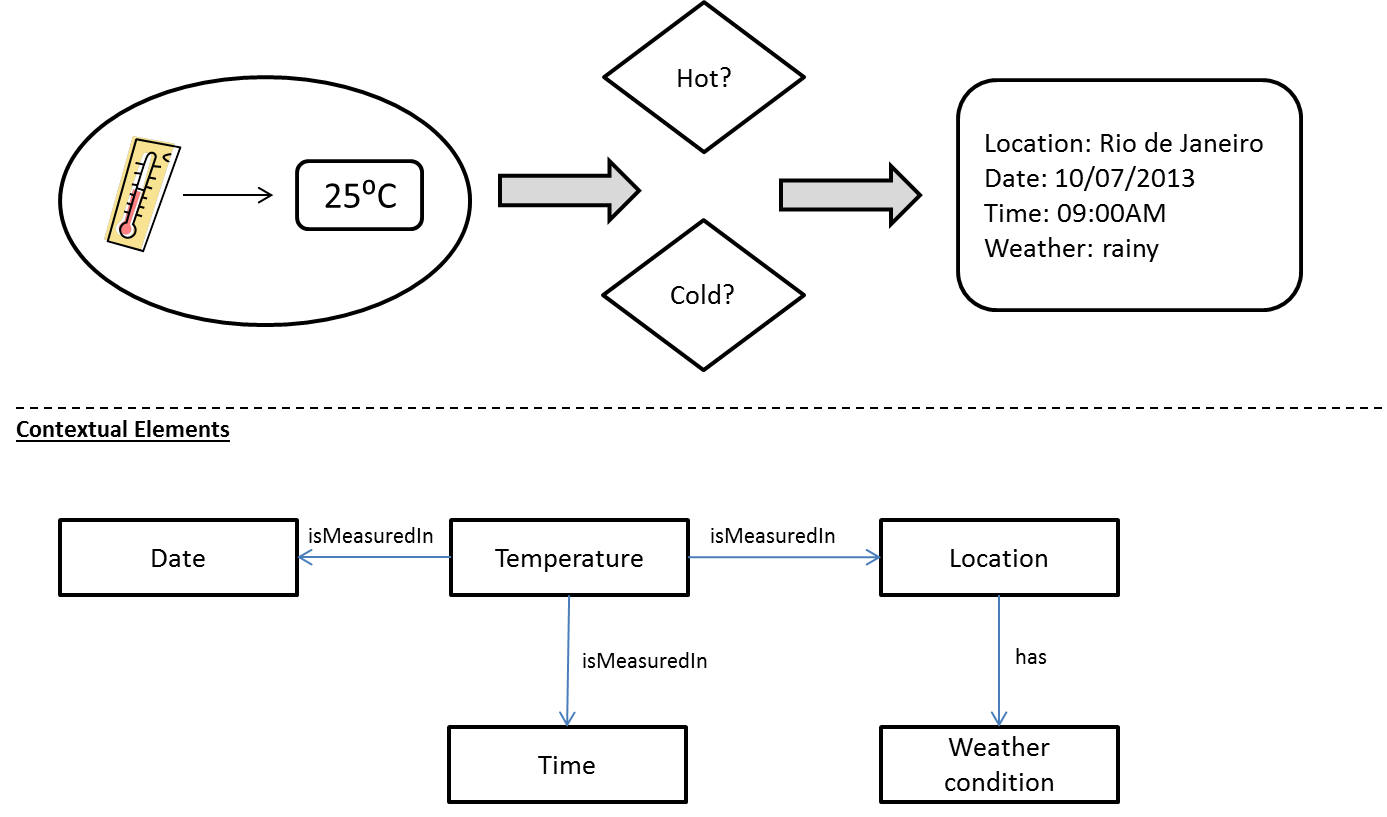Context
Context is an interdisciplinary topic of discussion and has a very broad interpretation in different domains (e.g., social anthropology, linguistics, philosophy, history and so on). As discussed by Dilley (1999), the idea is that social and cultural phenomena are interpreted within a reference, i.e., within a contextual perspective and interpretation. So, "an object is set in context, connected by relations to its relevant surroundings".
Within Computer Science, according to Bazire and Brézillon (2005), there are definitions (over 150) on the term of context that differ depending on the domain on which they are being used. In this research group, the following definition proposed by Brézillon (1999) is adopted: Context is a complex description of the shared knowledge about physical conditions, social, historical and others in which actions and events occur.
As an example in the figure below, a contextual information related to a tour guide system, indicates if the weather is hot or cold where the tourist wants to go. However, the concepts of "cold" and "hot" are not inferred only collecting the environment's temperature. Other factors such as location, date, time and weather conditions, i.e., a specific set of contextual elements, should be taken into account to derive this information and should be represented in a clear, unified and unambiguous way for the system to understand what information influences the actions and decisions that are to be made.

Example of an interpretation of a set of correlated CEs
References
Dilley, R. M., 2002, "The problem of context in social and cultural anthropology", Language and Communication, v. 22, n. 4 (Out.), pp. 437-456.
Bazire, M., Brézillon, P., 2005, "Understanding Context Before Using It: Modeling and Using Context", Proceedings of the 5th international conference on Modeling and Using Context (Context'05), pp. 29-40, Paris, France.
Brézillon, P., 1999, "Context in problem solving: a survey", The Knowledge Engineering Review, v.14, Issue 1, Cambridge University Press, pp. 47-80.
